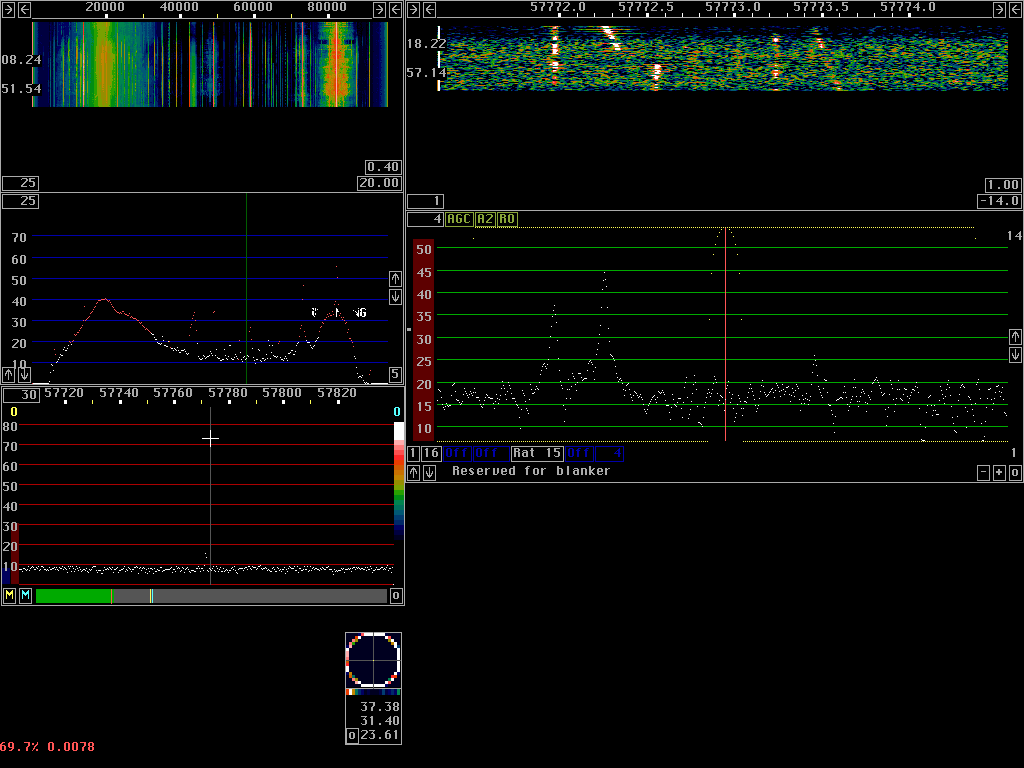|
The data file used for all images on this page
Figure 1 shows the linrad screen with the waterfall graph made from baseband data (the fft3 output). The baseband waterfall is a new feature, added in Linrad-01.04.
|

|
Fig 1.
Some qrss signals at very high resolution.
Note that the station at 57772.26 Hz is 30 dB above the noise floor as can be seen from the ordinary baseband spectrum. The bin bandwidth is probably too small for use with ordinary qrss signals unless the speed is reduced. Two of the stations have a frequency stability that is just on the limit for what can be used at this bandwidth. The qrss data file was processed with ordinary parameters for fft1 and fft2. To allow high resolution in fft3, the storage time of fft2 was set to 99 seconds and the baseband storage time was set to 200 seconds. The timf3 (=fft3) sampling speed was 96kHz/512 = 187.5 Hz so the N=14 transforms (size 16384) span 87.4 seconds with a bin bandwidth of 0.02 Hz since a sine squared window is used. The signals are not well visible because of qrm. The hardware used to make this recording does not have the dynamic range required so intermodulation products from AM broadcast stations destroy the noise floor. Compared to a waterfall based on fft2, the fft3 waterfall does not show anything more - and nothing less. By running at 512 times slower sampling speed it saves a lot of cpu time and it allows the normal spectrum and waterfall to be used to monitor a wide bandwidth simultaneously. This allows the operator to make sure that the wideband blanker operates properly. By setting a suitable resolution for fft2 it is also easy to fine tune the frequency in the high resolution graph.
|